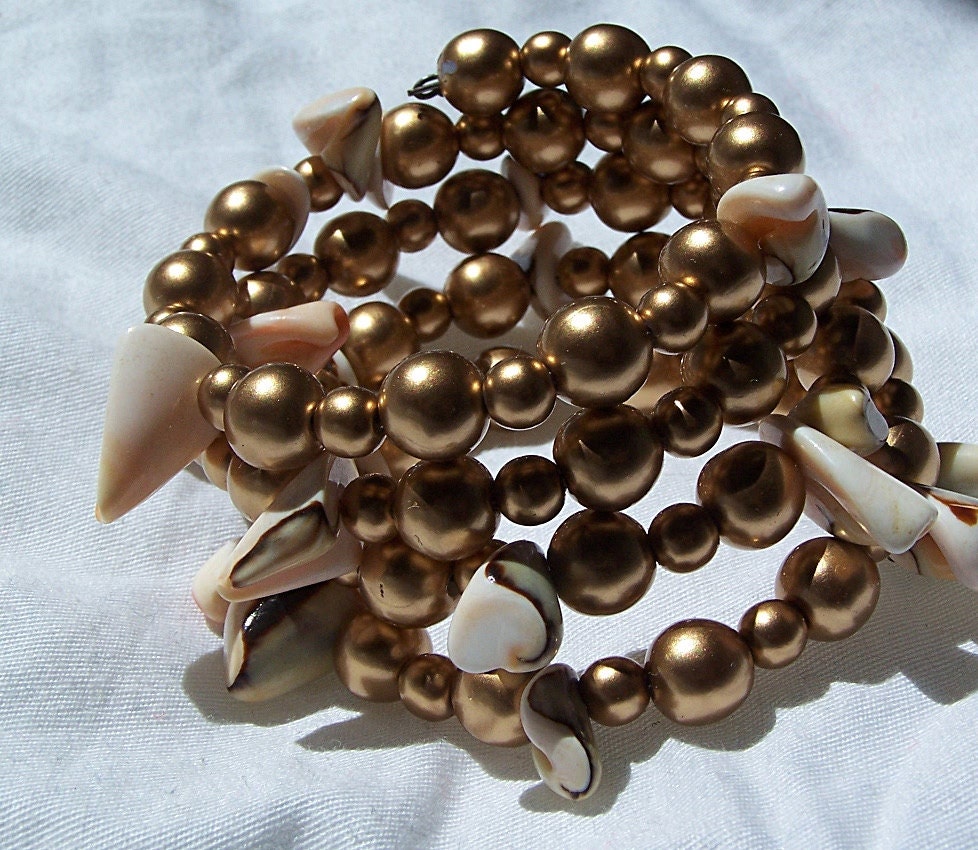 |
| Root 2 Pearls and Seashells Cuff - Hypatia Inspired |
Who was Hypatia? She was a Greek scientist, philosopher, and mathematician who lived in the third and fourth centuries of the common era in Roman Egypt. She was the last librarian of the Library of Alexandria, that fabled storehouse of knowledge lost forever to arson. Hypatia was also a world-class sassy, snarky lady:
She was so very beautiful and attractive that one of those who attended her lectures fell in love with her. He was not able to contain his desire, but he informed her of his condition. Ignorant reports say that Hypatia relieved him of his disease by music; but truth proclaims that music failed to have any effect. She brought some of her female rags[7] and threw them before him, showing him the signs of her unclean origin, and said, “You love this, O youth, and there is nothing beautiful about it.” His soul was turned away by shame and surprise at the unpleasant sight, and he was brought to his right mind. Such was Hypatia, both skillful and eloquent in words and prudent and civil in deeds.
Suda On Line
Unfortunately, Hypatia met an untimely end. In 415 C.E., aged anywhere between 45 - 65, she was murdered by a mob of rioting Christians who took her to be a godless pagan witch inciting religious turmoil. Or, as others suggest, her death was less a religious one and more the result of an ancient turf war. Either way, tragic.
Ancient Greek jewelry used a lot of metalsmithing techniques first developed in Mesopatamia and elsewhere. Metal wrist and arm cuffs were common, which is why I decided to go with a memory wire cuff. The Greeks would not have had memory wire, true, but the final look and structure of the product is similar:
 |
| Greek arm cuffs image courtesy of Sarah Swell |
| A bracelet unearthed as part of the Olbia treasure found in the Greek colony of Crimea. It dates to 100 BCE! |
The beads I used are faux pearls and seashells, resembling exactly the kinds of stones the Greeks would have used in their jewelry. They also used amethyst, carnelian, and all other sorts of agates, as well as glass.
The number in this one is root 2, which is perhaps the Greekest of all the irrationals. Root 2 was discovered to be irrational by the ancient Greeks themselves, and the story goes the Greek academics wanted to keep it a secret—so much so that they reportedly killed the Greek Hippasus for revealing it to the masses!
To further celebrate Hypatia's life and deeds, I'll be settling down with the English-language Spanish-produced movie Agora this weekend. While not necessarily strictly historically accurate, it has some good reviews.

No comments:
Post a Comment